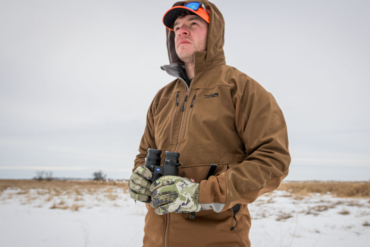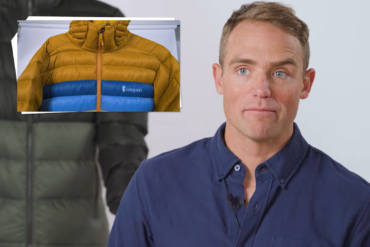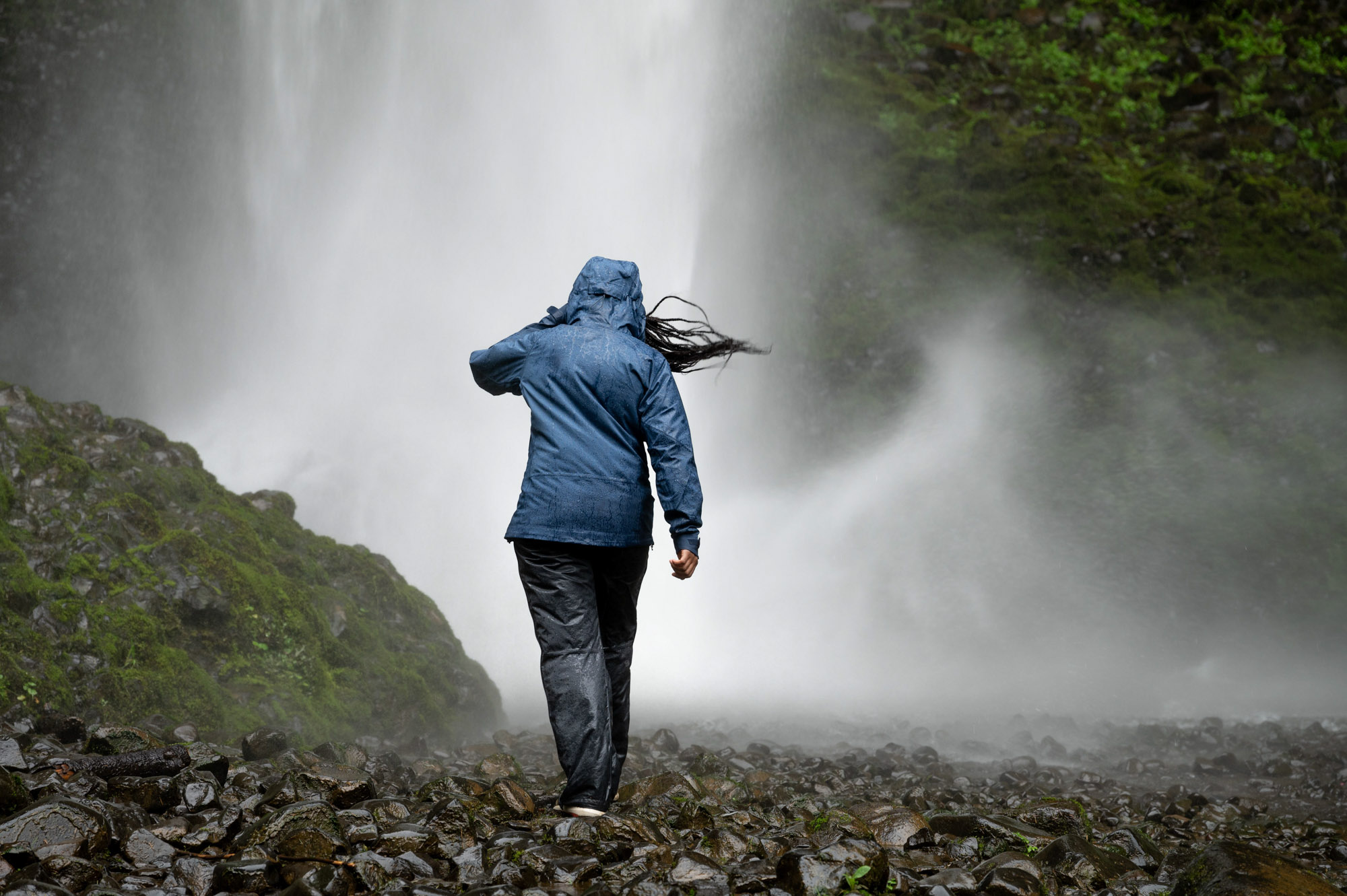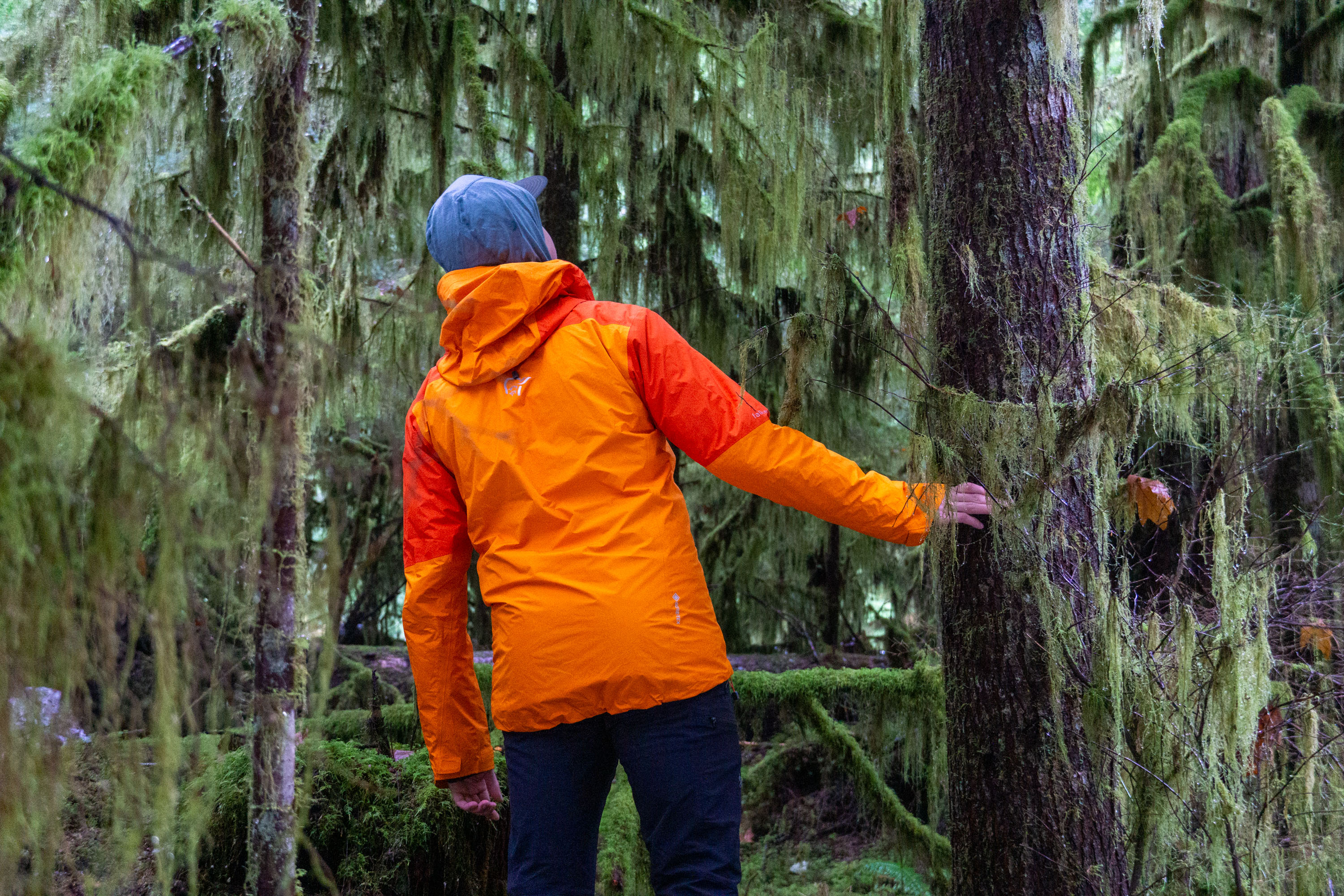Patagonia’s Grade VII Down Parka is a belay jacket designed for the most hardcore alpine conditions. I took the parka on an ice climbing trip last February for this review.

Patagonia claims the Grade VII Down Parka is the warmest and most technical jacket it’s ever produced. That’s a bold statement from the lauded retailer, but the parka lives up to it.
The Grade VII is a highlight of its High Alpine Kit and the most expensive product in the lineup – retailing for $900, and on sale now for $450.
In short: The Grade VII Down Parka is the pinnacle of garments crafted for use in the harshest alpine environments. The belay parka’s design and construction create one of the warmest and well-made belay jackets I’ve worn. When combining the Patagonia Hybrid Sleeping Bag with the parka, the Grade VII replaces half the weight of a sleeping bag. Not many adventurers require such a warm garment. But for those who do, this parka is hard to beat.
Patagonia Grade VII Parka: Technical Features
The most impressive physical aspect of the Grade VII parka is the baffled construction. Every part of the jacket, from the hood to hand-warmer pockets, holds 800-fill insulation. And the arm, shoulder, and chest baffles use glue instead of thread to eliminate needle holes and fend off water entry.
Both treated with a light DWR finish, the 100-percent nylon exterior and interior shell are differentially cut to maintain loft. The outer shell utilizes 1.2-ounce 15-denier ripstop for the front, and 1.2-ounce 20-denier for the back and sides. The inner shell sports 15-denier ripstop Quantum Pertex.
Elastic stitching on the side panels pulls the baffles closer to the body for heat retention. This also maintains line of sight to the harness area and feet. The cuffs are elasticized, thus eliminating potentially frozen hook and loop closures.
The over-the-helmet hood adjusts with a single pull drawcord. And an elastic cord on a small snow skirt seals the bottom of the parka. A pair of draft tubes insulates the main zipper.
There are eight pockets in the Grade VII Down Parka. Two handwarmer pockets in the normal position have stiffeners at the opening to ease entry when wearing large gloves. Plus, each of these is large enough for a 1-liter water bottle.
Meanwhile, two vertically zipped chest pockets offer an equally voluminous space. Four elastic-topped pockets line the interior, with mesh at the bottoms for drainage.
Review: Patagonia Grade VII Test

An ice climbing trip this past February provided favorable conditions to test the Patagonia Grade VII Down Parka. Temps were down in the teens, and winds exceeded 20 mph. Long belays in shaded alcoves during multi-pitch routes allowed the parka’s insulating powers to shine. I never felt chilled other than on my exposed face, and there were no cold spots in the construction.
The jacket represents the outermost upper body layer of Patagonia’s High Alpine Kit. It’s patterned and designed to work with the Nano Air Light Hoody and the M10 Anorak.
As a base layer, I used the Patagonia Merino Air Hoody (to be re-released as Capilene Air in August).
The Grade VII fit well over the other High Alpine Kit layers and glided over them during movement. The double main zipper sliders were handy to keep my harness belay loop accessible, and the double-draft tubes fended off all icy gusts.
Elastic in the side panels functioned as designed. It kept the loft snug against my slim build (6 feet, 167 pounds). And it allowed for as much line of sight as possible, even with its bulk. I liked the simple, low-profile, elastic wrist cuffs – I never felt the need for a hook and loop adjuster. Also, the ability to pull the sleeves up and back down without hassle was a big plus.
For overhead arm movements, I found the sleeves on the short side. (I have a 34.5-inch sleeve length, and the sleeves exposed about 0.75 inches of each wrist.) I also valued the Grade VII’s very generous back length, which kept me covered when hunched over in a mid-route belay cave.
The massive hood had plenty of interior room for my helmet and provided excellent coverage. But the additional warmth it offered came at the cost of some peripheral vision. I also had to unzip it a bit to talk.
Occasional abrasions against ice and stone – and haphazard stuffing into the pack – produced no damage to the shell materials or baffles.
At a verified weight of 1 pound 8 ounces for a size medium, the Grade VII is not a flyweight down parka. Its ripstop nylon outer shell is more robust than fabrics used on ultralight down parkas, so it’s much warmer than is typical for down. The fabric choices match the parka’s intended uses, which include being half of the sleeping system.
The Best Choice: Grade VII Parka Conclusions
The market for the Grade VII Parka (and the Patagonia High Alpine Kit) is admittedly narrow. Adventurers genuinely requiring such a warm belay jacket are few and far between. And for many outdoor enthusiasts, the cost alone is a deal breaker.
Oddly, as one reviewer on Patagonia’s site pointed out, the brand didn’t make a women’s version. And they didn’t label it “unisex.” Maybe it’s in the works? We can only guess.
But for those dedicated to chasing the most challenging objectives in the most extreme conditions, demanding cutting-edge performance from both gear and body, the Grade VII Down Parka might just be the best choice.













